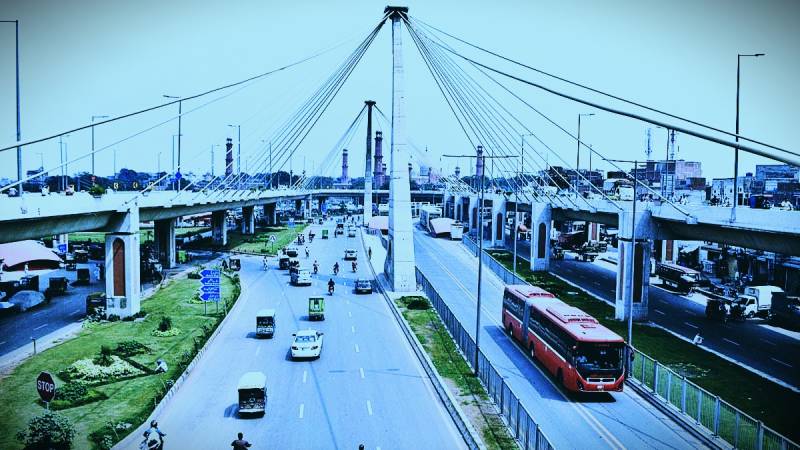
The Lahore Gulberg to M2 Elevated Expressway Project has sparked significant debate and controversy since its announcement by the Lahore Development Authority (LDA) in 2023. Netizens and the public have raised concerns about its potential impact on transportation, the environment and the socioeconomic landscape. On the other hand, the government claims that this project is a game-changer for Lahore. So, who’s right?
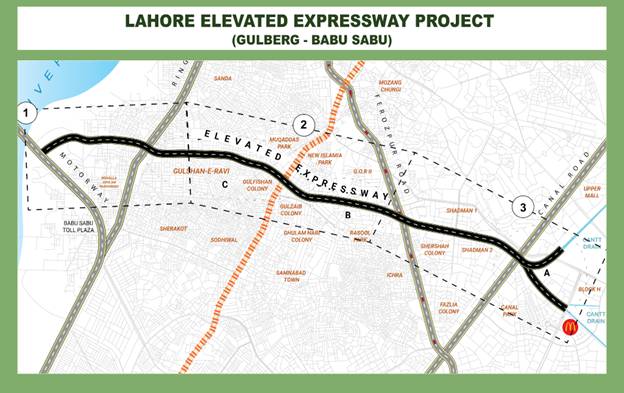
The birth of a great idea?
Although the Elevated Expressway project was unveiled in 2023, it is not a new concept. The project was previously shelved due to its hefty price tag of around Rs 35 billion. However, due to the current economic crisis, the estimated cost has now ballooned to approximately Rs 85 billion.
The LDA reports that the planned expressway will stretch 10.7 kilometres in length and be a 31-metre-wide four-lane dual-carriageway. It is designed to accommodate 31,304 vehicles per day.
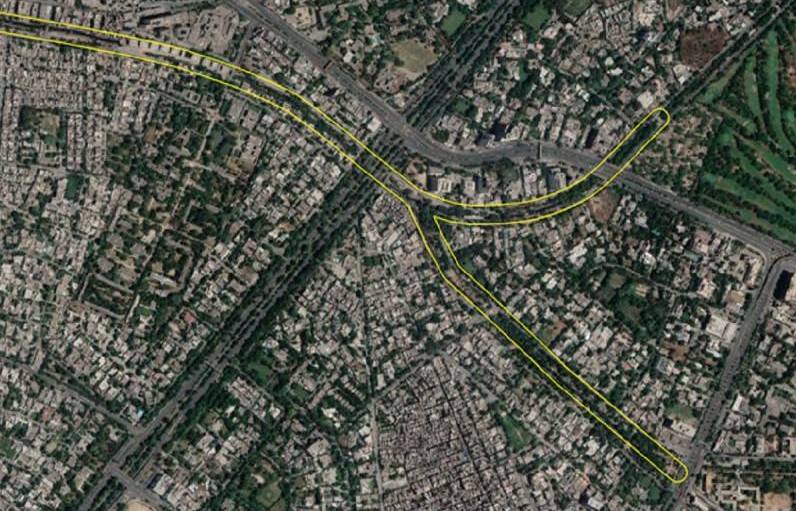
Who's spending the big bucks?
The LDA argues that Lahore's rapid growth has made it unmanageable in many aspects, particularly regarding traffic management. Congestion has long been a chronic issue in the city, causing delays and increasing emissions. The elevated expressway is intended to provide a signal-free, congestion-free route from the city centre to the motorway, significantly reducing travel times.
However, this ambitious endeavour comes at a staggering cost, at a time when the country is grappling with a financial crisis. The project had been shelved twice before due to funding constraints, yet now, with a tripled cost, the state claims to afford it.
Is saving 20 minutes of commute time worth such a substantial investment, especially when more pressing issues like education and climate conservation demand immediate attention?
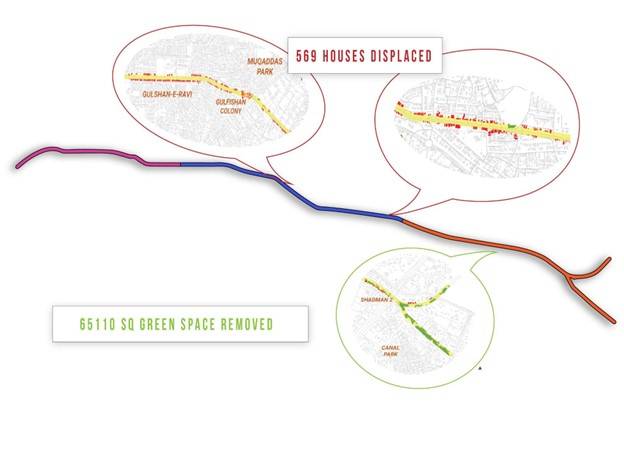
Where do all the trees go?
Lahore's air quality is one of the worst globally, particularly during winter. The project aims to address this issue by creating a signal-free route, allowing vehicles to move at a constant speed, thereby reducing emissions. While this may seem like a small contribution on an individual car level, it adds up when considering the cumulative reduction in emissions from 11 million cars annually.
However, satellite imagery and machine learning analysis done at CITY reveals that approximately 65,110 square metres of green space will be removed. The LDA estimates that 1,715 trees will be removed to make way for the expressway, but they promise the negative impacts will be mitigated through an Environmental Action Plan. Initially, the government committed to planting five times the number of trees to offset the loss of green space. However, recently the government has moved towards transplanting trees instead of cutting them down. This shift in policy has made it seem like the environment is more of an afterthought than a central tenet of the project.
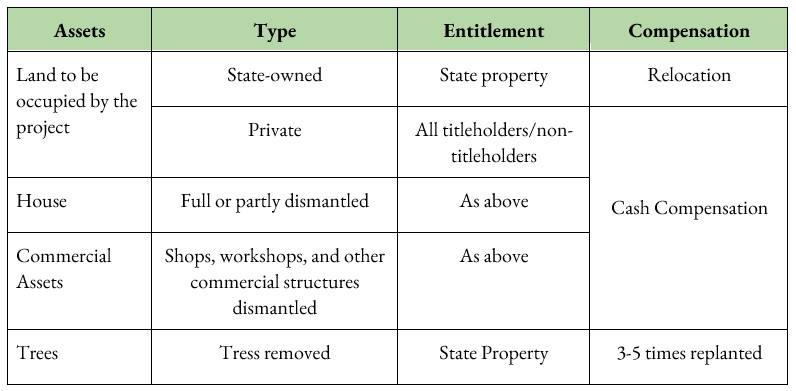
Cite your sources
Moreover, the fact that the Feasibility study for the project is from 2015 only makes matters worse. To date, we do not have an environmental action plan or recent data on the site which only exacerbates these uncertainties.
It is important to note here that there are alternative routes via the Ring Road that remain available for going to the Motorway. The LDA relies on those routes acting as backups while the expressway is being constructed. This begs the question, if there is already a Ring Road present to facilitate fast-moving traffic that is going towards the M2, why build another?
Get out of the way
The project involves significant land acquisition, affecting both state-owned and private properties, along with trees. About 563 families will be dislocated, and these families will receive compensation. By analysing the project route via remote sensing, we were able to deduce that there are 569 houses that will be demolished as of this year.
In terms of compensation, the LDA mentions following Asian Development Bank guidelines to maintain the standard of living for those affected. However, in 2015, Rs 3.5 billion were set apart for compensation, in 2023, while the rest of the budget has ballooned, this figure remains unchanged. How do they plan to help people maintain living standards while acquiring land at the agreed-upon prices from eight years ago?
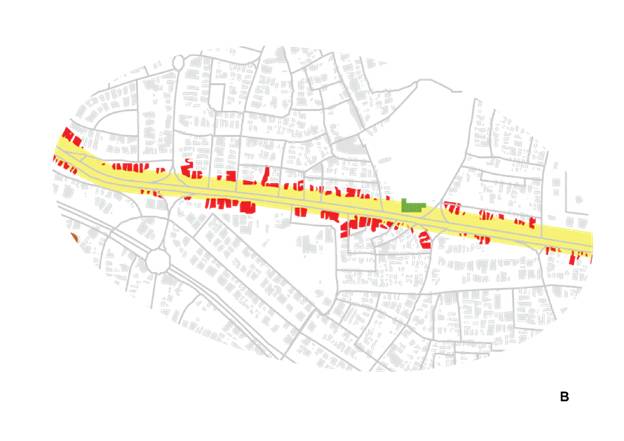
One positive aspect is that the project aims to minimise displacement. It follows the Cantt Drain, minimizing disruptions to communities residing along the route. Steps are being taken to safeguard the rights of squatters and residents in Katchi Abadis along the drain, yet uncertainties persist regarding affordable housing solutions for these individuals.
An elite project?
Critics argue that the project appears to cater to elite interests, favouring car owners and businessmen while neglecting sustainable and equitable transit models. The project’s association with the Ravi Urban Development Authority (RUDA) raises suspicions about the project's true intent, potentially benefiting real estate tycoons and the Central Business District. The decision to ban motorbikes and introduce tolls further suggests an exclusionary approach.
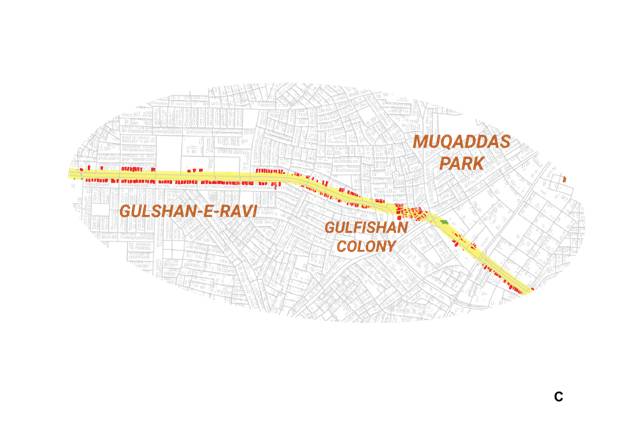
But, the economy comes first
Conversely, the project does create revenue with potential savings in vehicle operating costs, travel time benefits, and revenue from toll collection. Additionally, each stop on the expressway will become an economic hub and generate income for the communities along the expressway. Since the expressway is elevated, there will be minimal damage done to the street vendors and hawkers that operate in the area. It will also create job opportunities, with estimates of 190 to 370 skilled and unskilled workers required for construction.
However, the extensive area required for construction may result in significant inconvenience, traffic congestion, and disruption to daily life during the project's implementation phase. The LDA report estimates 18 months as the construction time if everything goes smoothly.
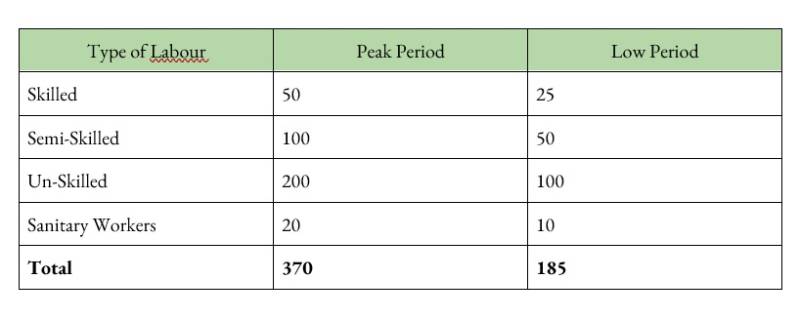
So, should Lahore go for it?
The Lahore Gulberg to M2 Elevated Expressway Project offers potential solutions to Lahore's traffic congestion and air pollution problems. However, its high cost, environmental impact, and concerns about its exclusivity and true objectives warrant careful consideration. Sustainable and equitable alternatives should be explored to ensure that the project aligns with the long-term interests of the city and its residents. Public transparency and involvement in decision-making processes are crucial to address these concerns and ensure that the project benefits all citizens, not just a select few.
Note: The Center for Urban Informatics, Technology and Policy (CITY) at the Lahore University of Management Sciences (LUMS) aims to transform the advances in technological innovations in data gathering, data analytics and data-driven decision-making for designing policy frameworks targeted at sustainable urban development with a focus on developing countries.

